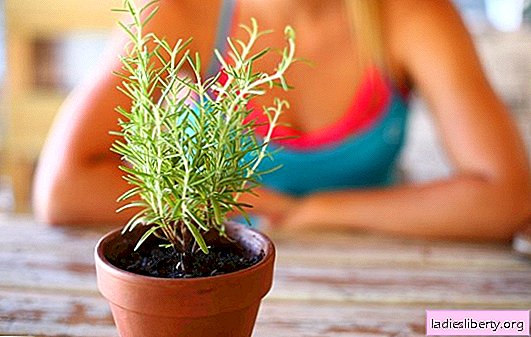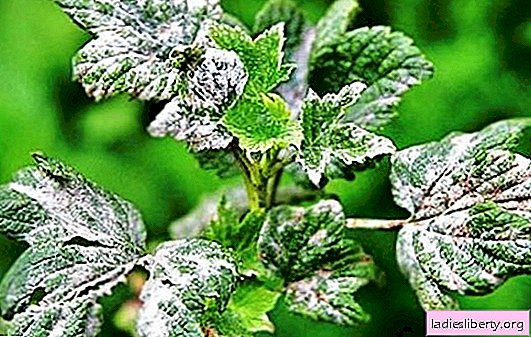
For summer residents who want to get a good strawberry crop every year, replanting bushes and rejuvenating the plantation is as much a necessity as pruning or top dressing.
Why transplant strawberries
One of the features of strawberries is a process of its development. The thing is that the bushes grow well and develop over the first four years, then the yield decreases, and the plantation is gradually reborn. For further fruiting, strawberries should be transplanted.
Properly performed procedure helps rejuvenate plantings and significantly increases productivity. In addition, during the development of the plant, many pests and bacteria accumulated in the soil. A transplant helps get rid of parasites and diseases.
When and how to transplant strawberries?
Experienced gardeners successfully transplant strawberries throughout the season. How to do it?
Transplant strawberry plantation in spring
The best time for a spring transplant is the beginning of April. At this time, begins the active vegetative growth of the bush and root system. All work must be completed before flowering, then the plant will transfer the transplant painlessly. What should be considered during spring work?
First you need to thin out the plantings: to identify plants that died during the winter, are stunted and sick. Such bushes need to be removed.
All plants that are selected for transplantation to a new place must be dug under the root.
Pits for planting young bushes need to be made spacious and deep. At the bottom of each planting pit sand is poured with a layer of about 10 cm. This technique allows you to water strawberries more often, without fear for the condition of the roots.
When transplanting, you need to monitor the "heart" of strawberries. It should not be too deep in the soil or raised to the surface.

The soil around the plants is compacted, and then slightly loosen from above. This allows moisture to flow quickly to the roots.
The first time you need to feed plants transplanted in the spring after 14 days. This will help strawberries grow stronger and grow faster.
Important! Strawberries transplanted in spring will yield a very meager crop of small berries. Full flowering and a large number of fruits will appear with good care only next year.
How to transplant strawberries in the summer
If the plantation needs rejuvenation or there is a desire to plant young outlets, expand the garden, then this can be done in the summer. It is enough to adhere to some rules so as not to ruin the plants.
In summer, strawberries are transplanted to a new place immediately after fruiting. The optimal period is July - August.
For work, choose a non-hot day or evening. After planting, young plants need shading.
Several shoots are left on the selected mother bushes, excess ones are removed so that they do not take away the strength of the plant.
Next, you need to intensively feed the young and only then well-developed young sockets to plant the mother bush.
The beds for planting need to be prepared in advance. To do this, make rotted manure or compost and dig the soil. Only after the second digging young plants begin to be planted.
Planting material must be fresh, do not allow the drying of the roots of strawberries.
The main work after planting is reduced to proper care and preparation for the first wintering.
The best time for a transplant will be the end of summer, when the weather is not so hot and more often it rains.
The best time to transplant strawberries is autumn
Indeed, autumn is the most “right” time of the year when it comes to transplanting strawberry beds. Frequent rains minimize strawberry care. The soil moisture level is sufficient to root young plants. The optimal time for work will be September, and in some regions you can wait until October. It all depends on the climate and the plant itself.
Young rosettes planted in September have time to build up enough leaf mass for a full winter. Therefore, transplanting strawberries in the fall gives the plant the opportunity to take root and winter well.
Another indisputable advantage of the autumn transplant is the spring flowering of the plant. Already with the onset of heat, young bushes will grow and give the first crop. Of course, it will not be as abundant fruiting as in biennial plants, but the fruits will grow good.
What to consider when transplanting strawberries
First of all, you need to prepare the soil and choose a place for planting young plants.
Choose a place to land
This issue must be approached responsibly. Since the health of the bushes and the crop depend on the space reserved for the beds. When choosing a place you need to remember about crop rotation. Good predecessors for strawberries would be:
legumes;
parsley;
garlic;
leaf salad;
radish;
beet;
carrot.
Plant strawberries well after green manure. But do not forget about those crops, after which it is not recommended to plant strawberries, there is a high risk of infection with verticillous wilting.
Tomatoes
cucumbers
potatoes;
cabbage.
But if the territory does not allow to transfer plantings to a favorable place, then it is imperative to disinfect the soil. For this, fungicides are used.
The plot for strawberry beds should be located in a calm place, but well-lit.
Preparing the soil for planting
Strawberry is unpretentious to soils, but grows well and bears fruit on friable soils with a slightly acid reaction. Before starting planting, you need to prepare a garden bed. Having well fertilized the earth at this moment, it is possible to provide strawberries with all the necessary nutrients for more than one season.
For digging in the garden, humus or rotted compost, chicken droppings are introduced. Fertilizer consumption is calculated as follows: per 1 sq. Km. m. beds use 1 bucket of fertilizing.
In the evening, the day before planting, the garden is well watered. Wells are made immediately before planting strawberries. The distance between plants should be at least 20 - 25 cm. Between the rows you need to leave more than 50 cm. This planting scheme will ensure the full development of plants.
Rules for the proper transplant of strawberries
1. Strawberries are propagated by young rosettes that have formed on the antennae. Some varieties are bred by dividing the bush during transplantation.
2. Plants with a well-developed root system are selected for planting. The rootlobe should have a length of at least 5 cm. The plant has well-developed 4-5 leaves.
3. Transplanting old bushes to a new place does not make sense, since the plants will not bring the desired results.
4. Using purchased planting material, it is necessary to disinfect it so as not to bring the disease to your site. To do this, before planting, the roots of the plant are dipped in hot water, the temperature of which is about 50 degrees, for 15 minutes. Then the seedlings are kept in cold water for about 10 minutes. After such a reception, the causative agents of many diseases and pest larvae die.
5. If the transplant does not work on the same day, then the roots of the plant should be wrapped with a wet cloth and placed in cellophane.
6. If several varieties of strawberries grow on the site, then they need to be planted separately, otherwise there will be pollination.
7. To speed up the survival of plants will help dipping the roots in a mixture of water, manure and clay.
8. After transplantation, the ground is mulched with sawdust or straw.
9. It should be remembered that strawberries are a delicate plant. Water for irrigation needs to be taken defended, warmed up in the sun.
10. The landing pattern can be two-line. The distance between the bushes is about 25 cm, between the lines - up to 40 cm, and the width of the beds itself is within 80 cm.












